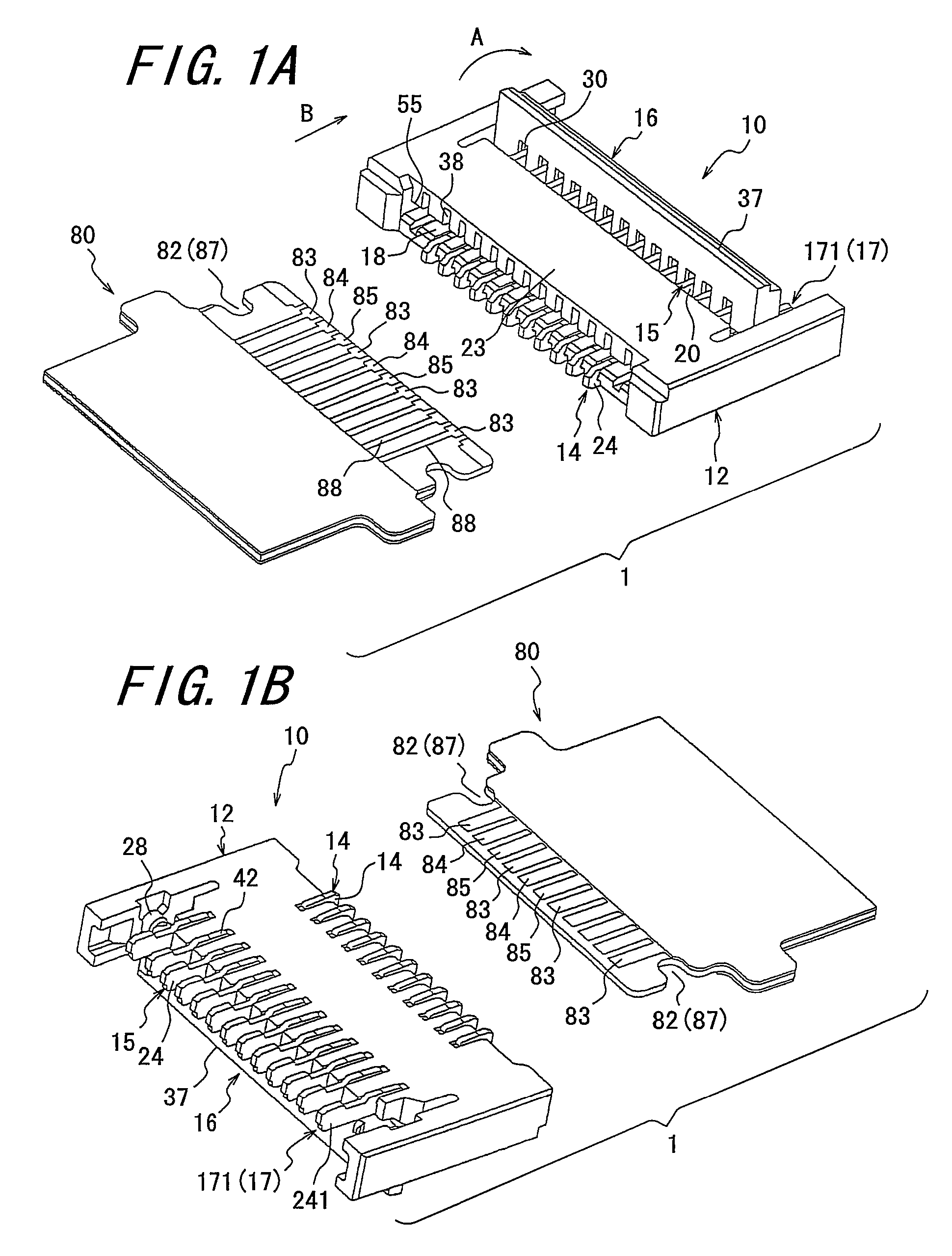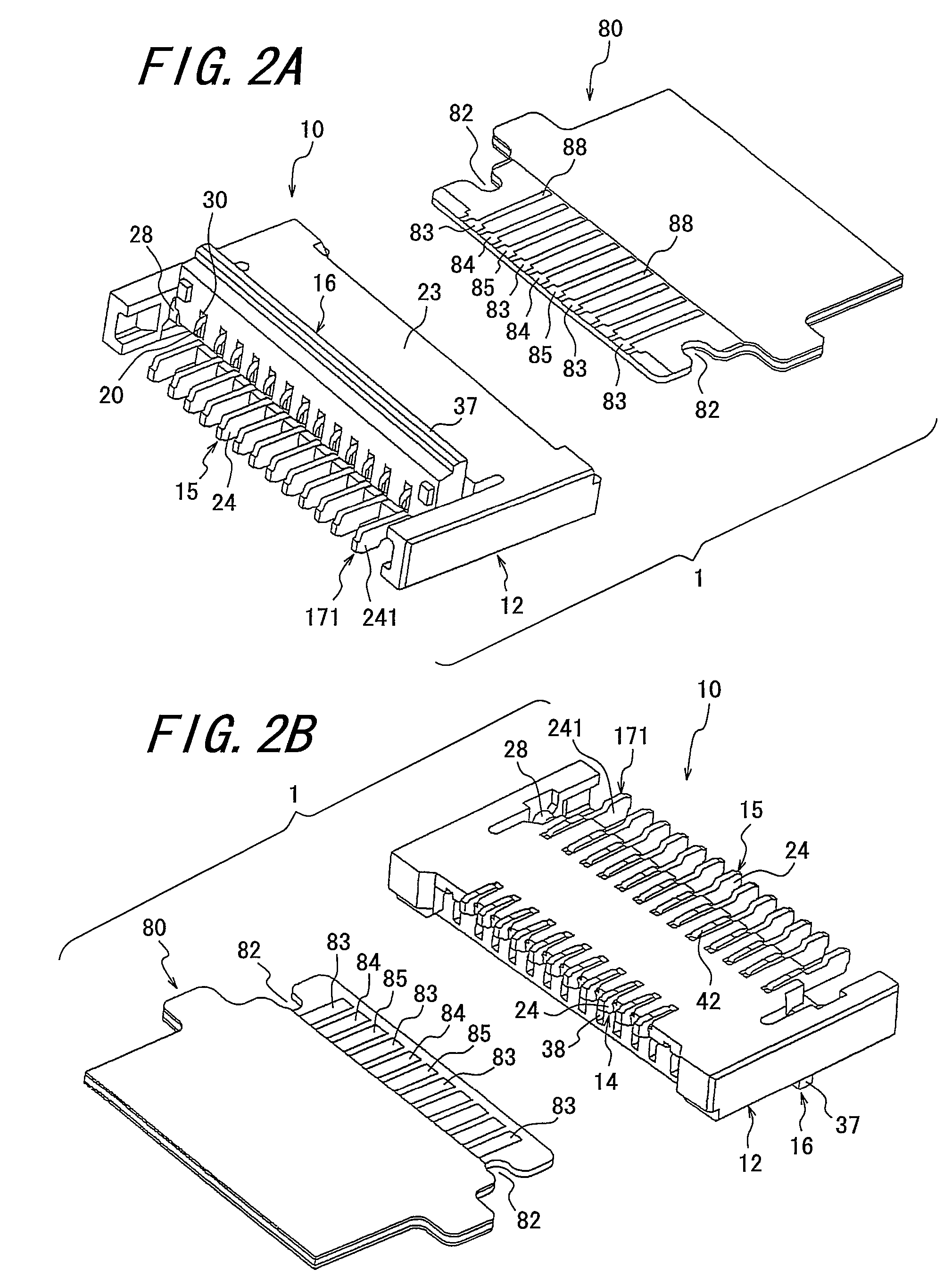Flexible circuit board connector
a flexible circuit board and connector technology, applied in the direction of coupling contact members, fixed connections, coupling device connections, etc., can solve the problems of 4 mm, difficult to realize the narrow pitch, and the low density of conductors, and achieve the effect of easy matching of characteristic impedances, increasing folding force, and high speed
- Summary
- Abstract
- Description
- Claims
- Application Information
AI Technical Summary
Benefits of technology
Problems solved by technology
Method used
Image
Examples
Embodiment Construction
[0087]The important aspect of the invention lies in that a flexible printed circuit board 80 is provided with required numbers of ground patterns 83, signal patterns 84 and phase inversion signal patterns 85 whose phases are inverted, and with a ground layer 86 between said front and rear surfaces, the signal pattern 84 and the phase inversion signal pattern 85 being arranged between the ground patterns 83, and the flexible printed circuit board 80 is provided at predetermined positions with exposed portions 87 (recessed portions 871) which reach said ground layer 86, that the contacts of the connector 10 consist of first contacts 14 and second contacts 15 of two kinds, and one first contact 14 and one second contact 15 are arranged in one and the same inserting hole 38 such that the contact portions 22 of the first contact 14 and the second contact 15 are opposite to each other for using these contacts as an upper and lower contact structure. The connector 10 further includes a piv...
PUM
 Login to View More
Login to View More Abstract
Description
Claims
Application Information
 Login to View More
Login to View More - R&D
- Intellectual Property
- Life Sciences
- Materials
- Tech Scout
- Unparalleled Data Quality
- Higher Quality Content
- 60% Fewer Hallucinations
Browse by: Latest US Patents, China's latest patents, Technical Efficacy Thesaurus, Application Domain, Technology Topic, Popular Technical Reports.
© 2025 PatSnap. All rights reserved.Legal|Privacy policy|Modern Slavery Act Transparency Statement|Sitemap|About US| Contact US: help@patsnap.com



